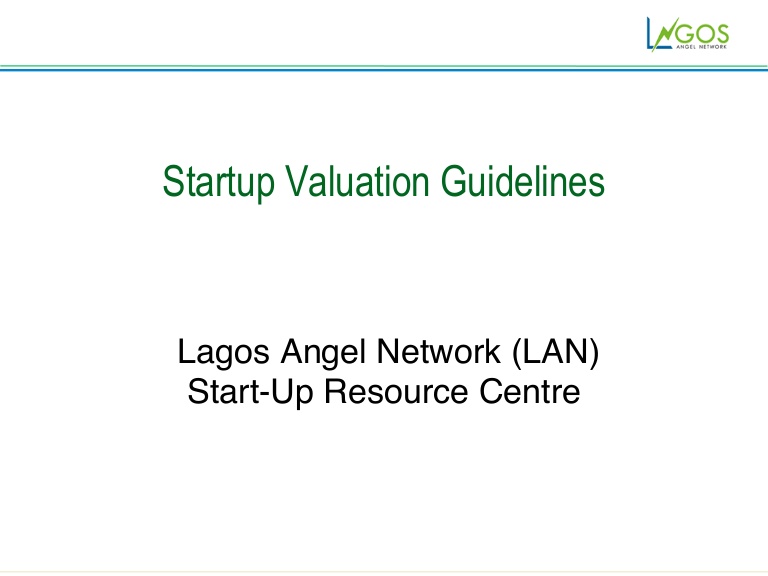Contents
Cloud technologies have made it far easier & economic to store and access data over the internet. The Adoption theory is most useful when watching new product launches, but it are often useful when taking existing products or services into a replacement market. Typically they like traditional communications and may adopt new products when there aren’t any alternatives. Laggards will come on board when ‘others’ have written about your products/services, they need research evidence, statistics or felt pressure from others. They’re alittle group of people exploring new ideas and technologies. It includes «gadget fetishists!» during an internet marketing context there are many specialist blogs & media platform to interact them, Engadget and Gizmodo for examples.
- They are doubtful and skeptical about the innovation of new products.
- The long-range competence of individuals to judge future innovations is facilitated by principles knowledge.
- Originally based on an extension of TRIZ concept, it has been improved in a useful method by utilizing tools such as Knowledge Based Management and Case-primarily based reasoning .
- Unlike some of the previous categories, individuals in this category show little to no opinion leadership.
The social system trendy oriented accepts the improvements more simply than historically oriented social system. In the same method, nature of the product also determines diffusion of that particular product available in the market. Studies of the above five components generally say that relative benefit and compatibility are most essential in influencing adoption of an innovation. But this is additionally true that these elements depend upon shopper perception. People vary in their readiness to try out new product or innovation.
Categories
The distribution of adopters over time closely approaches normality, and may be explained by the statistical concept of normal curve. The distribution of the adopters may be partitioned into five adopter categories by using the mean and standard deviation. The area lying to the left of the mean time of adoption minus two standard deviations includes 2.5 per cent of the individuals who are the first to adopt an innovation and are known as innovators.
The adoption of an innovation over time follows a normal, bell-shaped curve when plotted over time on frequency basis. If the cumulative number of adopters is plotted, it results in an S-shaped curve. The S-shaped curve is like that of a ‘learning curve’ as propounded by the psychologists. Each adoption in the social system is in a sense equivalent to a learning trial by an individual. The S-shaped curve is like that of a ‘learning curve’ as propounded by the psychologists.

The innovation adoption course of is offered as a sequence of stages, progressing from initiation through adoption determination to implementation of an innovation and it’s considered at the organizational stage. The Delphi survey conducted amongst 264 specialists of a diverse skilled and educational expertise allowed analyzing the perceived significance of every factor for the varied phases of the innovation adoption course of. The results of the analysis present that adopter categories the considered factors do not affect the innovation adoption process with the identical energy however exert varying levels of influence on the subsequent stages. The examine discusses the implications of those findings and suggests concepts for future analysis. In recent years, gradual improvements in info, computing, communication and connectivity applied sciences have enabled new technical possibilities for the adoption of Chatbots throughout numerous sectors.
Because of their limited resources, they cannot take hasty or poor decisions. Early adopters are a more integrated part of the local social system than are innovators. Whereas innovators are cosmopolites, early adopters are localities. This adopter’s category, more than any other, has the greatest degree of opinion leadership in most social systems.
Knowledge occurs when an individual (or the decision — making unit) is exposed to the innovation’s existence and gains some understanding of how it functions. I) Interpersonal channels — It refers to those which are used for face to face https://1investing.in/ communication between two or more individuals. It is the degree to which the results of an innovation are visible to others. The easier it is for individuals to see the results of an innovation, the more likely they are to adopt.
Adopter Categories Definition
Because early adopters usually are not too far ahead of the common individual in innovativeness, they serve as a task-mannequin for many different members of a social system. The early adopter is revered by his or her friends, and is the embodiment of successful, discrete use of latest ideas. Rogers explained that diffusion of innovation was the process by which an innovation is communicated through certain channels over time among members of a social system. It is important to examine why some innovations are successful, while others never become widely accepted. Most of the organizations consider that if they simply develop a new product that fits an essential want recognized by shoppers and promote, worth and distribute it nicely, gross sales will take place. But this does not work all the time numerous models have been given by advertising analysts after analyzing the method of each adoption and diffusion.

Prototyping is an experimental process where designers implement ideas into tangible forms of varying degrees of fidelity to capture design concepts and test them with users. Additionally, they fail to identify exactly who their target audience is. Until you test your idea, you won’t know who will find it useful. Without this information, your marketing could fall on deaf ears, getting you nowhere with your product idea — even if it’s a great one. Finally, several corporates make the classic error of exploring AI technologies in isolation, rather than in conjunction with other technologies.
In the above figure the diffusion process is given the shape of a normal distribution curve when considered over a period of time. The process starts with a slow beginning & then picks up momentum with more number of persons adopting the innovation. By the time laggards finally adopt an innovation, it may already have been superseded by a more recent idea which the innovators are already using. Problems of implementation are likely to be more serious when the adopter is an organisation rather than an individual.
Principles knowledge consists of information dealing with the functioning principles underlying how the innovation works. It is usually possible to adopt an innovation without principles knowledge, but the danger of misusing the new idea is greater, and discontinuance may result. The long-range competence of individuals to judge future innovations is facilitated by principles knowledge. Time does not exist independently of events, but it is an aspect of every activity. The time dimension is involved in diffusion in the innovation — decision process, in the innovativeness of an individual or other unit of adoption, and innovation’s rate of adoption in a system. Innovators are willing to take risks, youngest in age, have the highest social class, have great financial lucidity, very social and have closest contact to scientific sources and interaction with other innovators.
These are Followers who will read reviews by earlier adopters about new products before purchasing and that they are often engaged with reviews and via various Media, where they go to look for your products. R&D teams can work closely with marketing team to fix challenges based on the feedback from «Innovators» to ensure the product / service will reach the world flawless. We use our business expertise to foster a collaborative innovation surroundings that pulls capital, creates jobs and has a long-term, economic influence. The study analyses the broad sets of factors that affect the innovation adoption course of in the environmental, organizational, high managers,’ innovation and user acceptance context.
The innovativeness dimension, as measured by the time at which an individual adopts an innovation, is continuous. This is second fastest category of individuals who adopt an innovation. These individuals have the highest degree of opinion leadership among the other adopter categories. As per Geoffrey A. Moore, in between Early Adopters and Pragmatists lies a chasm.
Explain The Tools of Direct Marketing
These people are likely belong to the backward classes, may be working as share- croppers and agricultural labourers, with very little land of their own. They are generally resource-poor people with little surplus to invest in their production enterprise. They generally live in areas having least urban influence and, socially and economically the most disadvantaged. Less active in formal groups than early adopters, but more active than those adopting later.
Reason is that in an organisational setting, a number of individuals are usually involved in the innovation — decision process, and the implementers are often a different set of people from the decision makers. How-to knowledge consists of information necessary to use an innovation properly. When an adequate level of how-to knowledge is not obtained prior to the trial and adoption of an innovation, rejection or discontinuance is likely to result. Change agents could perhaps play their distinctive role to concentrate on «how-to knowledge» at the trial and decision stage in the process.
Four main elements that influence the spread of a new idea are the innovation, communication channels, time, and the social system. Diffusion of innovations manifests itself in different ways in various cultures and fields and is highly subjective to the type of adopters and innovation decision process. The most successful adoption of a public well being program results from understanding the target population and the factors influencing their price of adoption.
Defence Jobs
They have more opinion leadership and potential adopters look to them for advice and information about the innovation. They try to maintain adoption leadership to keep up their prestige in the community. The late majority adopt new ideas just after the average member of a social system. Adoption may be both an economic necessity and the answer to increasing social pressures. Innovations are approached with a skeptical and cautions air, and the late majority do not adopt until most other in their social system have done so. The weight of system norms must definitely favour the innovation before the late majority are convinced.
The innovator also must be willing to accept an occasional setback when one of the new ideas he adopts proves unsuccessful. Adoption is a decision to make full use of an innovation as the best course of action available. Decision occurs when an individual (or other decision — making unit) engages in activities that lead to a choice to adopt or reject the innovation. While the mental activity as the knowledge stage was mainly cognitive , the main type of thinking at the persuasion function is affective . At this stage, a general perception of the innovation is developed.
They do not have opinion leadership and is almost a forgotten mass of people in the community. They have little or no education, least participant and hardly any contact with the outside world. Marketers have been trying to influence consumers to adopt new innovations. Advertising is done extensively when the results are not found positive by distribution of free samples and promotions. Sometimes price promotions and free samples are backed by advertising techniques. Sometimes change agents are used to overcome resistance to adoption.
A business wants to prototype as quickly as attainable because it accelerates the method of determining whether an thought must be pursued or discarded. Each thought thought-about for additional investment goes through this process many occasions and can undergo several stages of refinement. The first prototype is never the ultimate one, but as the method continues, the nature of the inquiry results in finer ranges of element. IBM aids later diffusion by giving everyone a stake in the idea from the beginning. Serendipity isn’t a method, but that’s the extent of most companies’ innovation planning. In this function I developed a strong passion for remodeling economies via technology and innovation.
Нет Ответов